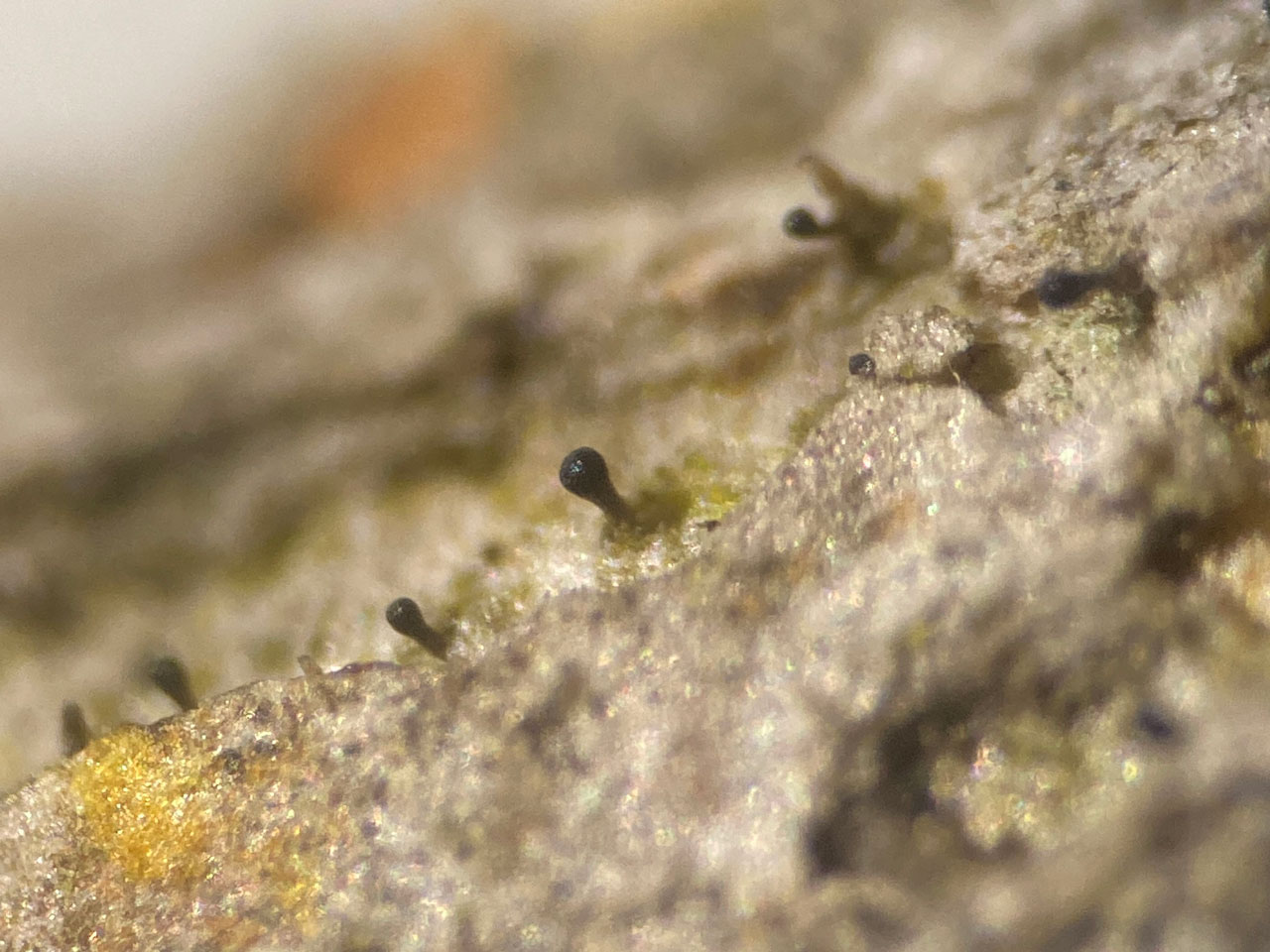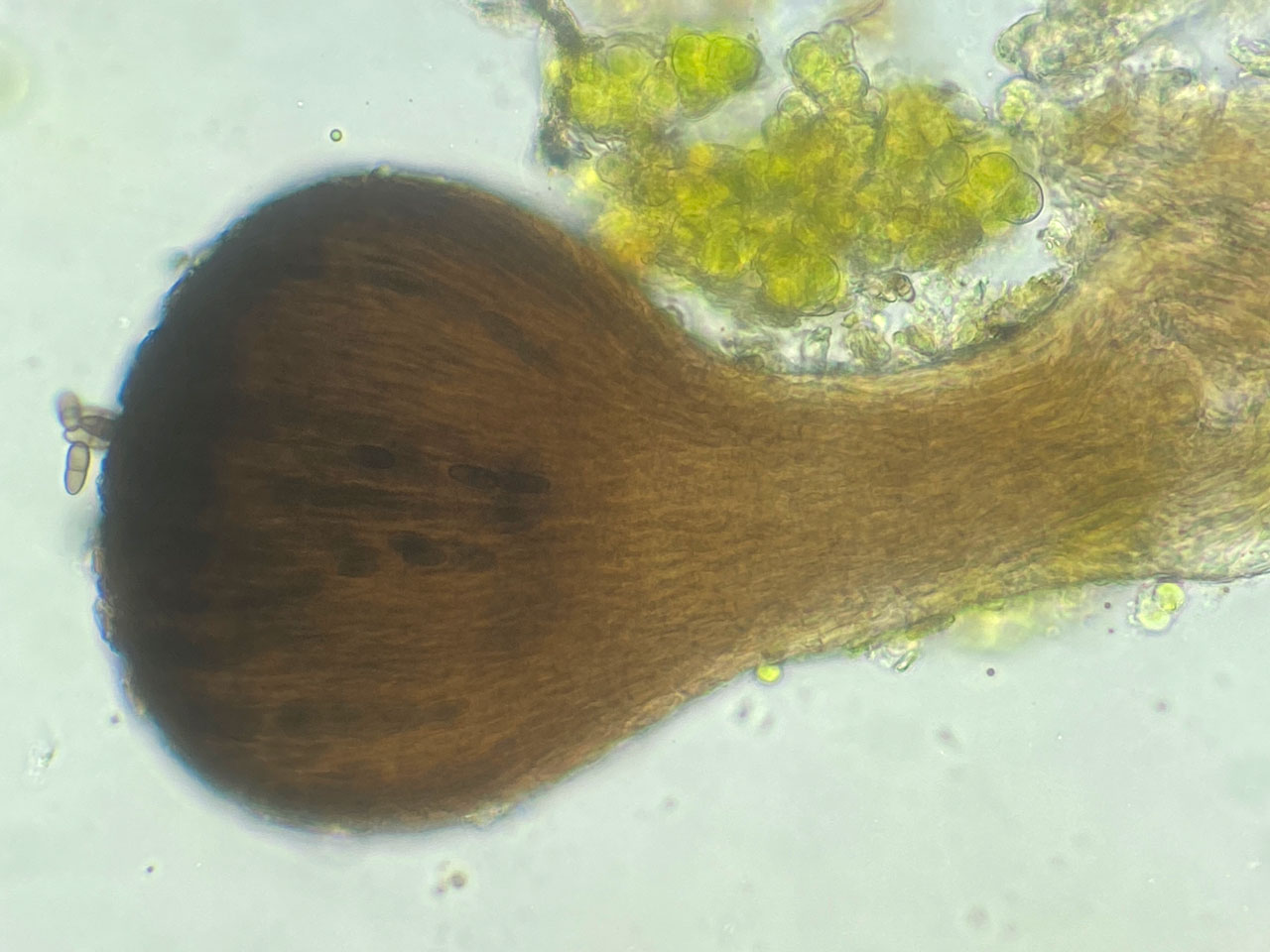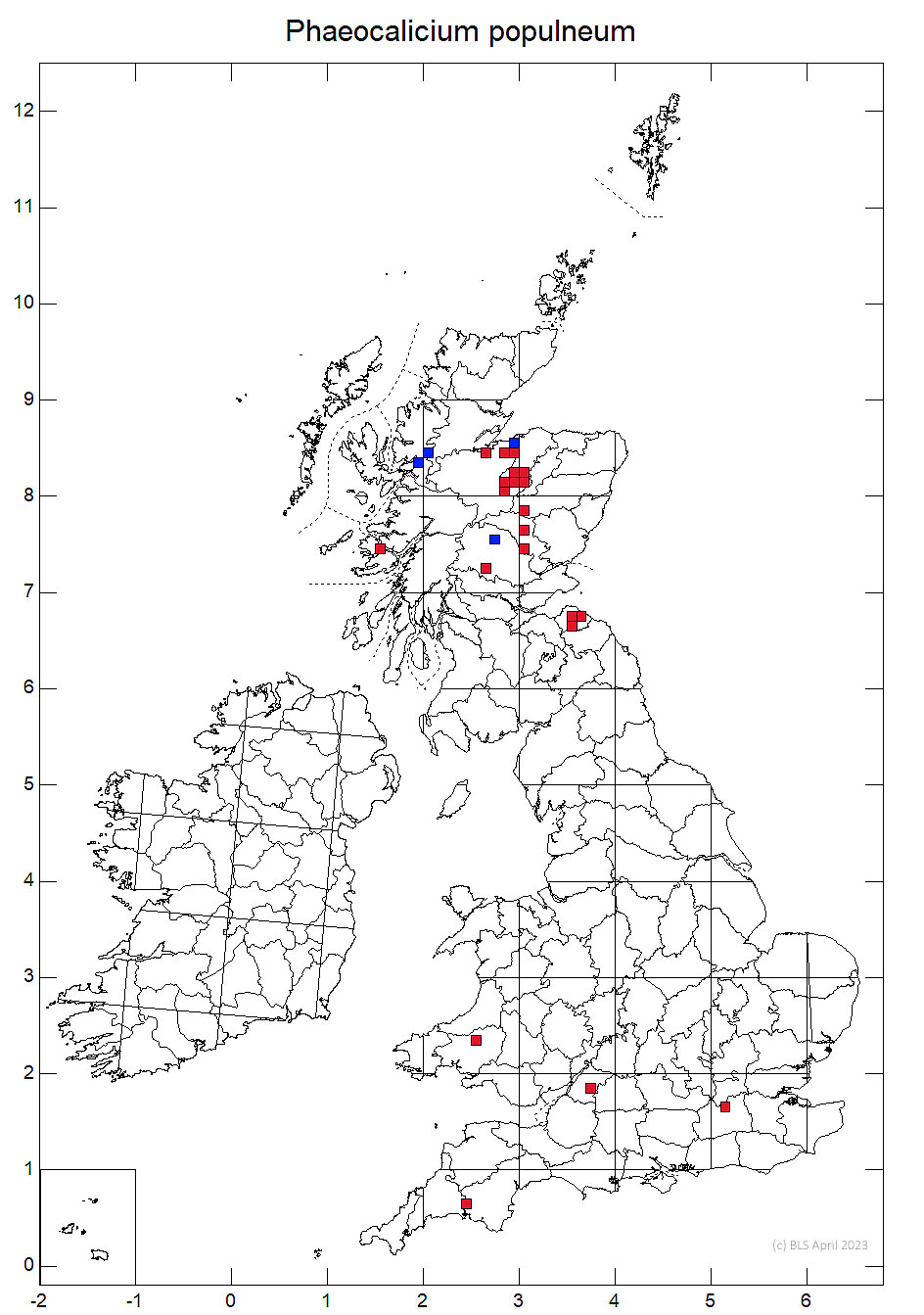A tiny pinhead fungus to be looked for on the twigs and branches of Poplar species (both Aspen and planted culitvars), especially within bark lenticels. The similar Phaeocalicium praecedens differs in the aseptate ascospores, consistant K+ blue-green reaction of the stalk and taller apothecia and is confined to Aspen.
Apothecia 0.4–0.7 mm tall, not flattened laterally, black- or olivaceous brown; head 0.2–0.3 mm diam., lenticular, not pruinose; epithecium brown to reddish brown; hypothecium colourless; stalk 0.04–0.06 mm diam., the outer part consisting of colourless, swollen hyphae, inner part K+ reddish brown, occasionally K+ blue-green at the base, surrounded by a thick gelatinous coat. Ascospores 12–13 × 4–5 µm, medium brown, 1-septate, the septum weakly pigmented and formed tardily, smooth-walled.
Phaeocalicium praecedens differs in the aseptate ascospores, a consistant K+ blue-green reaction of the stalk (only occsional seen in Phaeocalicium populneum (Aguirre-Hudson & Spooner, B. (2019)) and taller apothecia. British specimens reported as Phaeocalicium (Stenocybe) tremulicola belong here.
On Poplar species, both Aspen and planted culitvars, on twigs and branches, especially within bark lenticels.

Rare, scattered records England (Devon, Gloucestershire, Surrey), Wales (Carmarthen), N. & C. Scotland. Old Irish records require confirmation.
The occurrence on planted Poplars in widely separated areas suggests this is a quite mobile species, if rare.
Britain: Notable
Scotland: Priority Taxon for Biodiversity in Scotland
Aguirre-Hudson, B. & Spooner, B. (2019) Phaeocalicium populneum new to South-East Britain. Field Mycology 20: 86-90. Link
Sanderson, A., Cannon, P., Coppins, B., & Simkin, J. (2025). Mycocaliciales: Sphinctrinaceae, including Chaenothecopsis, Mycocalicium, Phaeocalicium, Sphinctrina and Stenocybe. Revisions of British and Irish Lichens 52: 1–15.
Text by Neil A Sanderson based on Sanderson et al (2025)


